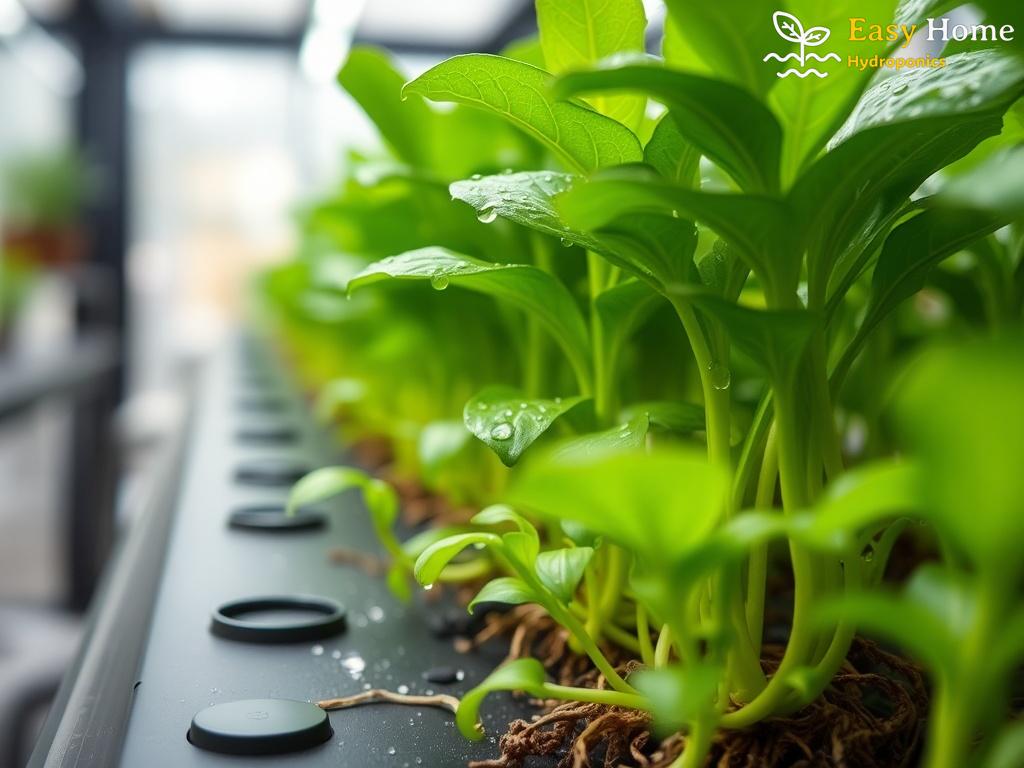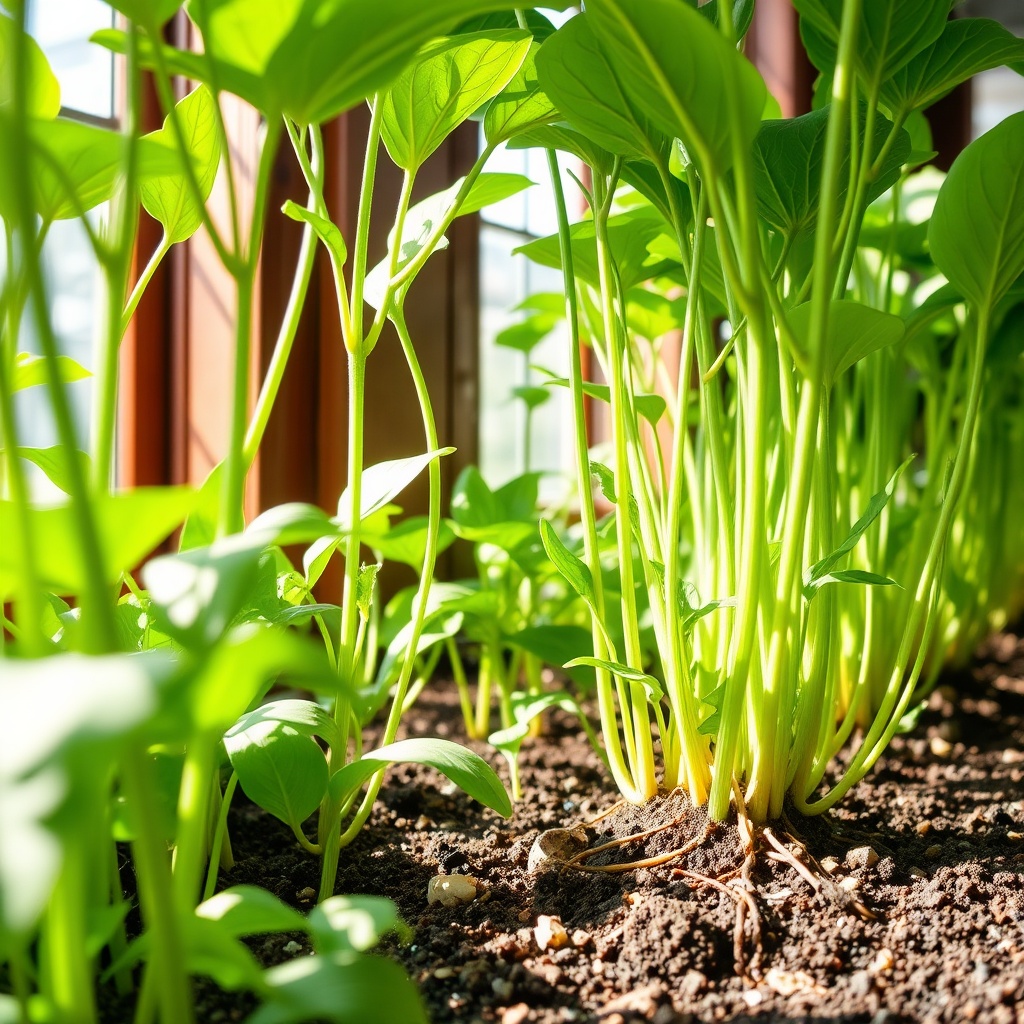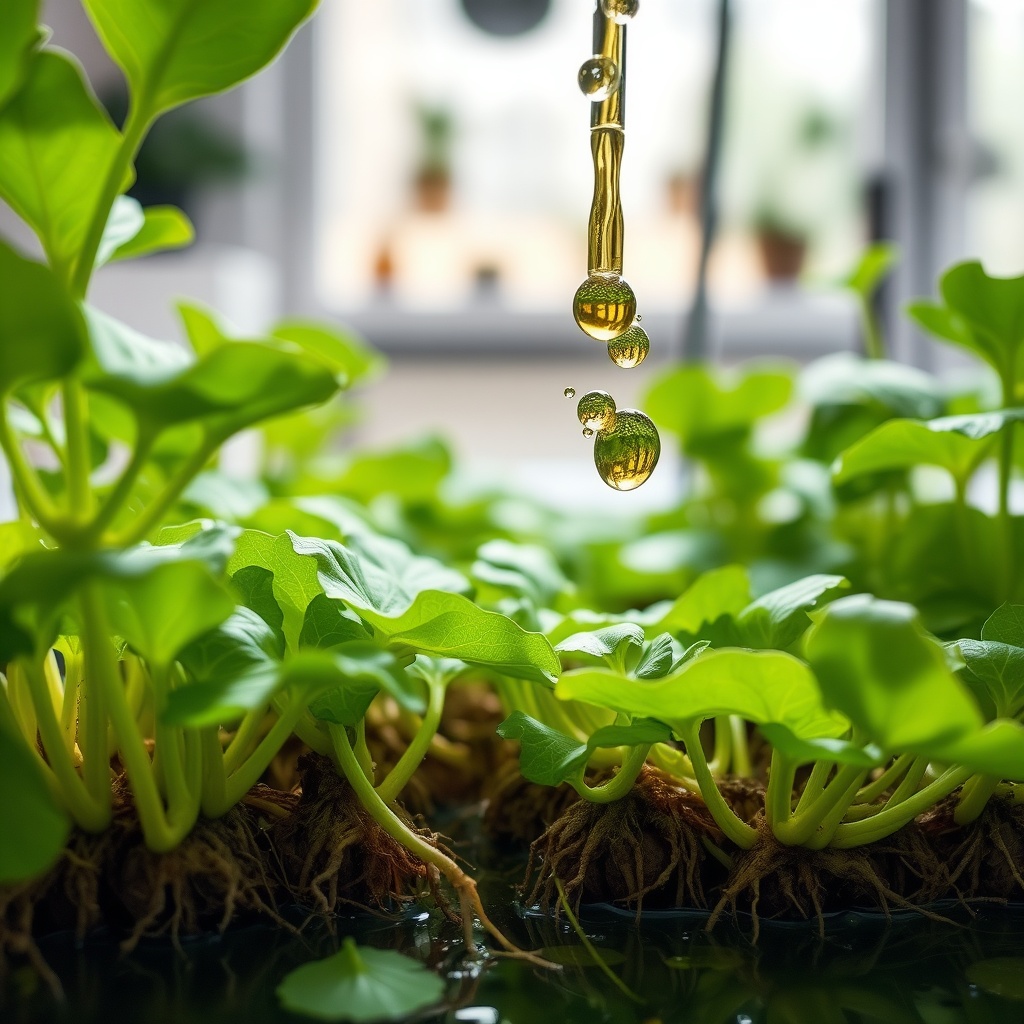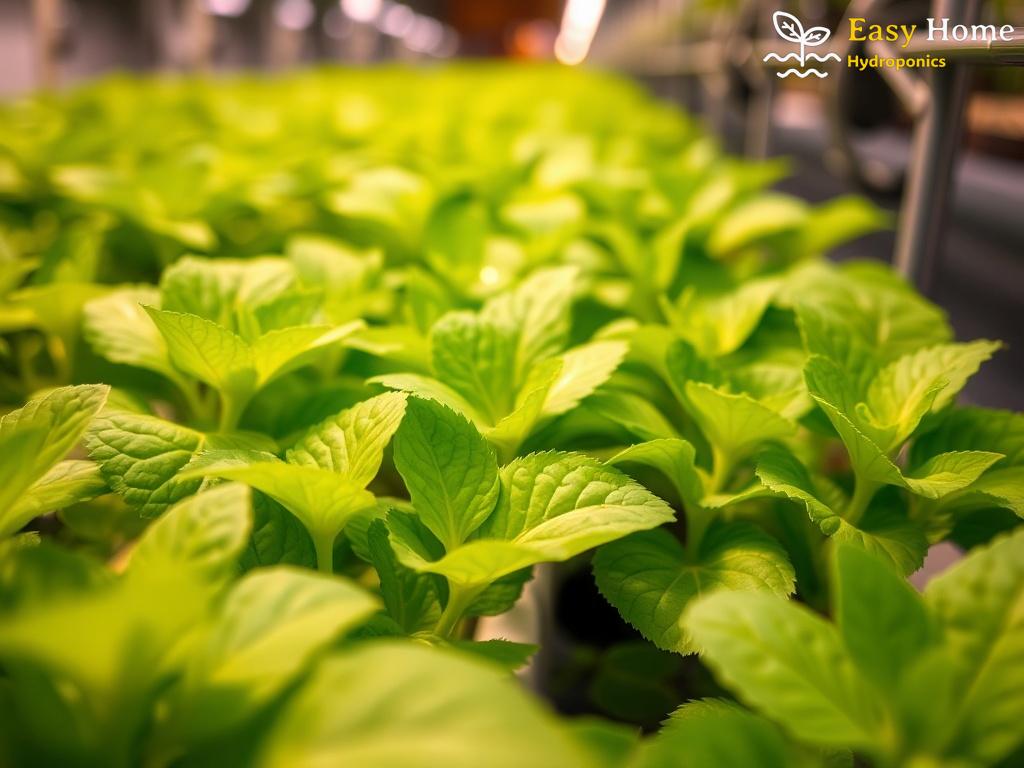Unlocking Nutrients: The Key to Thriving Hydroponic Fodder
Hydroponic fodder has become a go-to solution for livestock owners looking for efficient and sustainable feed options. But what makes this method thrive? The answer lies in the nutrient basics that every home grower must grasp. By understanding the essential nutrients and how they affect plant growth, you can unlock the potential of your hydroponic system.
Plants require a combination of macro and micronutrients to thrive. Macro nutrients include nitrogen, phosphorus, and potassium, while micronutrients like iron, manganese, and zinc play a vital role in smaller quantities. Each nutrient serves a specific function, contributing to the overall health and productivity of your fodder.
In hydroponics, the nutrients need to be delivered through a solution since there’s no soil to provide them. This is where nutrient solutions come into play, tailored to meet the needs of your fodder crops. Understanding how to mix these solutions correctly is critical for successful growth.
Below is a basic comparison of two popular nutrient solutions:
| Nutrient Solution | Pros | Cons |
|---|---|---|
| General Hydroponics Flora Series | Customizable, highly concentrated | Can be complex for beginners |
| FoxFarm Liquid Nutrient Trio | Easy to use, great for beginners | Less customizable |
For the adventurous home grower, crafting your own nutrient mix can be both rewarding and cost-effective. It allows you to tailor the nutrients to the specific needs of your fodder. Here’s a simple guide to get started:
- Choose your base: Start with a hydrosol or liquid fertilizer that contains the primary macronutrients.
- Add micronutrients: Incorporate chelated forms of micronutrients to ensure better absorption.
- Adjust pH levels: Aim for a pH between 5.5 and 6.5 for optimal nutrient uptake.
- Monitor and adjust: Regularly test your nutrient solution to maintain balance.
By mastering these nutrient basics, you can not only enhance the growth of your hydroponic fodder but also ensure that your livestock receive the healthiest feed possible. Remember, successful hydroponic growing is as much about understanding the science behind nutrients as it is about the art of cultivation.
Essential Elements: What Your Fodder Needs to Flourish
To cultivate vibrant and nutritious hydroponic fodder, understanding the essential elements that contribute to its flourishing is paramount. Each component plays a significant role, influencing not only the growth rate but also the quality of the fodder produced. The right balance of these elements ensures your crops thrive, yielding robust plants that can provide optimal nutrition for your livestock.
Every plant requires a mix of both macro and micronutrients to reach its full potential. Macro nutrients, such as nitrogen, phosphorus, and potassium, are needed in larger quantities and form the backbone of healthy plant development. Conversely, micronutrients like iron, manganese, and boron, though required in smaller amounts, are no less critical. They assist in various physiological processes that enhance overall plant vigor.
To simplify your nutrient management, here’s a handy checklist of essential elements your hydroponic fodder will need:
- Nitrogen: Vital for leafy growth and overall plant development.
- Phosphorus: Key for root development and energy transfer within the plant.
- Potassium: Helps in water regulation and enhances disease resistance.
- Calcium: Important for cell wall structure and growth.
- Magnesium: Central to photosynthesis and enzyme activation.
- Iron: Crucial for chlorophyll synthesis and overall plant health.
- Manganese: Assists in enzyme functions and photosynthesis.
- Zinc: Important for hormone production and growth regulation.
By keeping these essential elements in check, you can create a nutrient-rich environment that supports strong, healthy fodder crops. Remember, the key is to monitor and adjust your nutrient solution based on the specific needs of your plants, ensuring they receive the right balance for optimal growth.
Balancing Act: The Art of Nutrient Ratios in Hydroponics
In the world of hydroponic fodder production, achieving the right nutrient ratios is akin to striking a delicate balance on a tightrope. Too much or too little of any nutrient can lead to subpar growth, making it essential for home growers to understand the intricacies of nutrient ratios. This knowledge not only enhances plant health but also maximizes the nutritional value of the feed you provide for livestock.
The concept of nutrient ratios revolves around the idea that all nutrients work synergistically. It’s not merely about providing the required nutrients; it’s about providing them in the right proportions. A well-balanced nutrient solution ensures that plants can absorb the necessary elements without experiencing nutrient lockout or deficiencies. For instance, an overabundance of nitrogen can hinder the absorption of potassium, leading to stunted growth and poor fodder quality.
Creating an optimal nutrient blend involves careful consideration of the specific needs of your hydroponic fodder. Here’s a quick guide to help you navigate through the process:
- Assess Plant Requirements: Different species of fodder may have varying nutrient demands. Understand the specific needs of the crops you intend to grow.
- Start with a Base Ratio: A common starting point for nutrient ratios is the N-P-K (Nitrogen-Phosphorus-Potassium) ratio of 3-1-2. From here, adjustments can be made based on plant responses.
- Monitor and Adjust: Regularly test your nutrient solution to identify imbalances. Adjust concentrations accordingly, focusing on the primary nutrients first, then fine-tuning micronutrients.
Observation is a crucial aspect of mastering nutrient ratios. Keep a close eye on your plants as they grow. Are the leaves vibrant and green? Is the growth rate consistent? Any signs of nutrient deficiency—such as yellowing leaves or stunted growth—should prompt a review of your nutrient ratios. By maintaining an adaptable approach and being responsive to the needs of your plants, you can ensure that your hydroponic fodder flourishes, providing the best nutritional support for your livestock.
Common Nutrient Deficiencies: Spotting Issues in Your Fodder
In the journey of hydroponic fodder production, recognizing nutrient deficiencies is crucial for ensuring robust plant health and optimal yields. Just as humans require a balanced diet, your hydroponic crops depend on a well-rounded nutrient intake. When deficiencies arise, they can manifest in various ways, impacting not only growth rates but also the nutritional quality of the fodder. Let’s dive into the common signs of nutrient deficiencies and how to address them effectively.
Plants communicate their needs through visual cues, making it essential for growers to develop an eye for these signs. By understanding the specific symptoms associated with nutrient deficiencies, you can take prompt action to remedy the situation. Below is a table summarizing the most common deficiencies along with their visual indicators:
| Nutrient | Visual Symptoms | Potential Causes |
|---|---|---|
| Nitrogen | Yellowing of older leaves, stunted growth | Insufficient levels in nutrient solution |
| Phosphorus | Purple discoloration on leaves and stems | Low temperatures, pH imbalance |
| Potassium | Brown leaf edges, weak stems | Inadequate nutrient solution or high sodium levels |
| Calcium | Leaf tip burn, blossom end rot | Low concentrations in nutrient solution |
| Magnesium | Interveinal chlorosis (yellowing between leaf veins) | pH too low or high, nutrient lockout |
| Iron | Chlorosis in younger leaves, stunted growth | Poor pH management, high phosphorus levels |
Once you’ve identified the symptoms of nutrient deficiencies, the next step is to implement corrective measures. Here are some effective strategies to restore balance in your hydroponic system:
- Adjust Nutrient Solution: Ensure that your nutrient solution is properly balanced, adjusting concentrations of specific nutrients as needed.
- pH Management: Regularly test and adjust the pH levels of your solution to ensure optimal nutrient uptake.
- Foliar Feeding: In cases of severe deficiencies, foliar sprays can provide an immediate boost of essential nutrients.
- Regular Monitoring: Keep a close watch on your plants and nutrient levels, making adjustments as necessary to prevent deficiencies before they arise.
While addressing deficiencies is essential, prevention should be your primary goal. Here are some proactive measures to promote a nutrient-rich environment for your hydroponic fodder:
- Start with Quality Seeds: Ensure you’re using seeds that are known for their resilience and adaptability.
- Maintain Clean Systems: Regularly clean your hydroponic system to prevent the buildup of pathogens and ensure efficient nutrient absorption.
- Educate Yourself: Stay informed about the nutrient needs of the specific crops you are growing, as different plants have different requirements.
DIY Nutrient Solutions: Crafting Your Own Hydroponic Mix
In the quest for optimal hydroponic fodder growth, many home growers are discovering the benefits of crafting their own nutrient solutions. This approach not only allows for a tailored mix that can adapt to specific crop needs but also offers a sense of empowerment and satisfaction. By understanding the essential components that make up a nutrient solution, you can create a blend that promotes vigorous growth and enhances the nutritional profile of your fodder.
When developing your DIY nutrient solution, it’s crucial to start with a solid foundation. The key ingredients include macronutrients such as nitrogen, phosphorus, and potassium, which are required in larger quantities, and micronutrients like iron, manganese, and copper, which, though needed in smaller amounts, are vital for various physiological processes. A well-balanced mix ensures that your plants receive all the necessary elements for healthy growth.
To help you visualize the components of a successful nutrient solution, consider the following table that outlines the essential nutrients, their functions, and common sources:
| Nutrient | Function | Common Sources |
|---|---|---|
| Nitrogen | Promotes leafy growth | Urea, ammonium nitrate |
| Phosphorus | Supports root development | Monoammonium phosphate, rock phosphate |
| Potassium | Aids in water regulation | Potassium sulfate, potassium chloride |
| Calcium | Strengthens cell walls | Calcium nitrate, gypsum |
| Iron | Essential for chlorophyll production | Iron chelate, ferrous sulfate |
Now that you have a grasp of the essential nutrients, it’s time to get your hands dirty and mix your own solution. Start by measuring out the required amounts of your chosen nutrients based on the specific needs of your fodder crops. A common starting point is a balanced N-P-K ratio of 3-1-2, which can be adjusted based on plant responses. Carefully dissolve each component in water, ensuring complete integration to avoid nutrient lockout.
Next, it’s vital to monitor the pH level of your nutrient solution. Aim for a pH between 5.5 and 6.5 to facilitate optimal nutrient uptake. Regular testing and adjustments will help maintain this balance, ensuring that your plants can access the nutrients they need without hindrance. As you embark on this DIY journey, remember that observation is your best tool. Keep an eye on your plants’ growth patterns and make adjustments as necessary, creating an environment that fosters healthy and vibrant hydroponic fodder.




